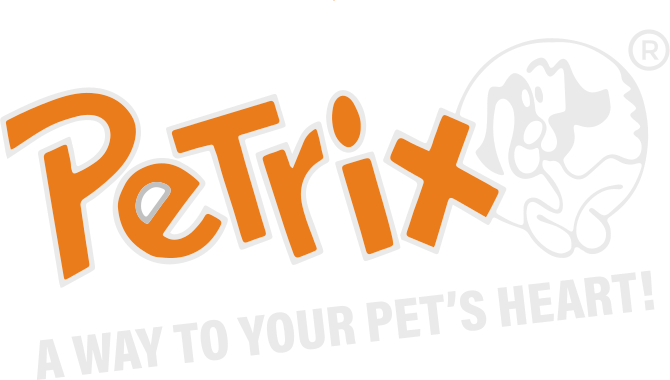
Just like humans, dogs require a well-balanced diet to meet their nutritional needs, including proteins, fats, carbohydrates, vitamins, and minerals. While regular meals form the foundation of their diet, treats can play an important role when used appropriately. However, treats should complement, not replace, a balanced diet. This guide explores the key aspects of dog nutrition and explains how to integrate treats in a way that supports your dog’s overall health.
The Fundamentals of Dog Nutrition
To ensure your dog stays healthy and energetic, their diet needs to contain all the essential nutrients in the right amounts.
The six main classes of nutrients that are crucial for dogs are:
- Proteins: Proteins are the building blocks of tissues and are vital for growth, maintenance, and repair. Dogs require high-quality protein sources, such as chicken, beef, fish, eggs, and certain plant-based proteins.
- Fats: Fats provide energy, promote healthy skin and coat, and support overall cell function. Flaxseed oil, chicken fat, and fish oil are healthy fat foods. Omega-3 and omega-6 fatty acids, found in these sources, are particularly beneficial for dogs.
- Carbohydrates: Carbohydrates provide energy and aid in digestive health. While not as essential for dogs as they are for humans, carbohydrates from whole grains, vegetables, and legumes can provide fiber and help keep your dog’s digestive system healthy.
- Vitamins: Vitamins like A, D, E, K, and B-complex vitamins are essential for various metabolic processes, immune function, and overall health.
- Minerals: Minerals such as calcium, phosphorus, potassium, magnesium, and zinc are necessary for bone health, nerve function, and enzyme activation.
- Water: Water is critical for hydration, digestion, and nutrient absorption. A dog should always have access to fresh, clean water.
These nutrients should be present in your dog’s daily meals, ideally through high-quality commercial dog food that meets the standards set by organizations such as the Association of American Feed Control Officials (AAFCO).
Order Now:
The Place of Treats in a Dog’s Nutrition
Treats serve various purposes in a dog’s life, including training rewards, behavior reinforcement, and simply providing enjoyment. While treats are not a substitute for complete and balanced meals, they can be used strategically to enhance a dog’s overall diet when chosen wisely. Here are some ways in which treats can complement a balanced diet:
- Training and Positive Reinforcement: Treats are often used as rewards during training sessions to encourage good behavior and reinforce obedience. High-value treats—those that your dog finds particularly enticing—can be especially useful for training difficult commands or addressing behavioral challenges. When used in moderation, treats become an effective tool without significantly impacting the dog’s overall calorie intake.
- Providing Nutritional Variety: Treats can offer nutritional variety and supplement key nutrients that may be lacking in regular meals. For example, treats rich in omega-3 fatty acids, such as fish-based treats, can improve your dog’s coat and skin health. Antioxidant-rich treats made with fruits and vegetables like blueberries or sweet potatoes can provide additional health benefits.
- Dental Health: Some treats are specifically designed to promote dental health. These treats can help reduce plaque and tartar buildup, freshen breath, and maintain healthy gums. Chewing on dental treats can also provide mental stimulation, reducing boredom-related behaviors.
- Mental Stimulation and Enrichment: Treats can be used to keep your dog mentally stimulated. Puzzle toys filled with treats or long-lasting chews, like bully sticks or antlers, can engage your dog for extended periods, reducing anxiety and destructive behavior. Providing enrichment through treats is especially important for dogs that spend a lot of time indoors or alone.
- Boosting Calorie Intake for Active or Underweight Dogs: If your dog is highly active or underweight, treats can serve as an additional source of calories. In such cases, high-protein, high-fat treats can help your dog maintain a healthy weight and energy level. However, it’s important to consult with a veterinarian before adding extra calories to your dog’s diet.
Choosing Healthy Treats
When selecting treats, it’s important to focus on quality and nutritional content. Not all treats are created equal, and many commercially available treats can be high in artificial ingredients, sugar, or unhealthy fats. Here are key factors to consider when choosing treats for your dog:
- Nutritional Value: Look for treats that contain whole, natural ingredients and provide some nutritional benefits. Avoid treats with fillers like corn, wheat, or soy, as well as artificial preservatives, colors, and flavors. Opt for treats made with lean proteins (chicken, turkey, fish) or wholesome ingredients like sweet potatoes, pumpkin, or apples.
- Portion Size and Caloric Content: Treats should only make up about 10% of your dog’s daily caloric intake. Overfeeding treats can lead to obesity and related health issues such as joint problems, heart disease, and diabetes. Choose smaller, low-calorie treats for training purposes, so you can reward your dog frequently without adding too many extra calories.
- Special Dietary Needs: If your dog has any food allergies, sensitivities, or special dietary requirements, you should choose treats that cater to their needs. For example, grain-free treats are ideal for dogs with grain sensitivities, and hypoallergenic treats are suitable for dogs with protein allergies. There are also treats designed for specific health issues, such as digestive health, weight management, or joint support.
- Avoiding Toxic Ingredients: Some common ingredients in human food and certain treats can be harmful or even toxic to dogs. Avoid treats containing chocolate, xylitol (a sugar substitute), grapes, raisins, onions, and garlic, as these can cause serious health problems.
 Moderation and Timing: Key to a Healthy Diet
Moderation and Timing: Key to a Healthy Diet
While treats can provide additional nutrients and enjoyment for your dog, it’s crucial to offer them in moderation. Overfeeding treats can lead to an unbalanced diet and contribute to obesity. Here are some guidelines for incorporating treats into your dog’s diet without compromising their health:
- Follow the 90/10 Rule: A general guideline for dog treats is the 90/10 rule: 90% of your dog’s daily calories should come from their regular, nutritionally complete meals, and 10% or less from treats. For example, if your dog needs 500 calories a day, no more than 50 calories should come from treats.
- Use Treats Strategically: Instead of giving treats randomly throughout the day, use them as rewards for good behavior or during training sessions. This not only reinforces positive behavior but also limits the number of treats your dog receives.
- Consider Alternatives to Treats: If your dog is on a restricted diet or if you’re concerned about their caloric intake, there are healthier alternatives to traditional treats. For example, small pieces of fruits or vegetables, such as carrots, apples (without seeds), or green beans, can be low-calorie options that dogs enjoy. These alternatives can provide the same level of enjoyment without adding excess calories.
- Monitor Weight and Adjust as Needed: Regularly monitor your dog’s weight and body condition. If you notice weight gain, reduce the number of treats you offer or choose lower-calorie options. It’s also important to adjust your dog’s meal portions if they are receiving more treats throughout the day.
Homemade Treats: A Healthy Alternative
For pet owners who want more control over what their dogs eat, homemade treats can be an excellent option. When making homemade treats, you can ensure that only high-quality ingredients are used, and you can tailor the recipe to suit your dog’s specific dietary needs. Popular ingredients for homemade dog treats include peanut butter (without xylitol), pumpkin, sweet potatoes, oats, and lean meats.
Buy Online:
However, even homemade treats should be fed in moderation, and it’s essential to consult with a veterinarian or canine nutritionist when introducing new ingredients into your dog’s diet, especially if your dog has food allergies or health concerns.
Treats can be a valuable part of your dog’s life when used appropriately. They can enhance training, provide mental stimulation, and even offer certain nutritional benefits. However, it’s important to choose healthy treats and offer them in moderation, ensuring they complement, rather than replace, a balanced diet. By paying attention to your dog’s nutritional needs, monitoring their weight, and selecting quality treats, you can ensure that treats play a positive role in maintaining your dog’s health and happiness.




Leave a Reply